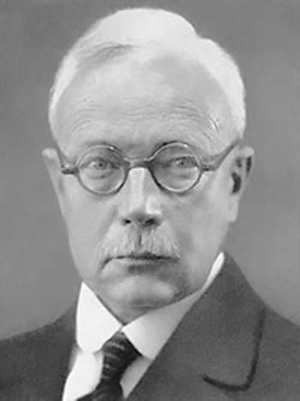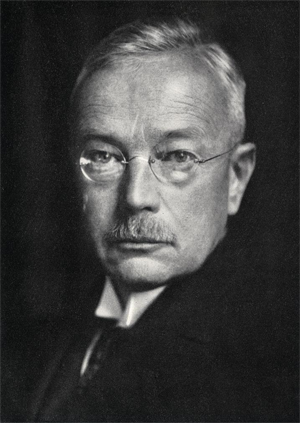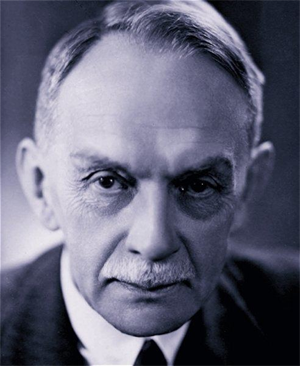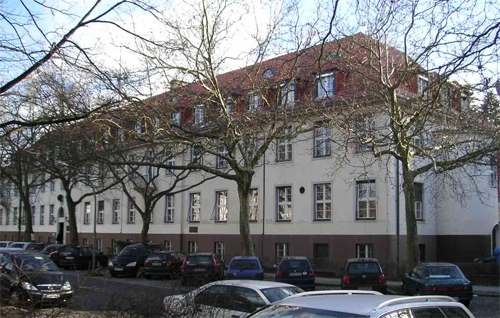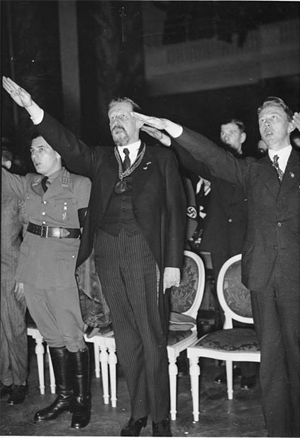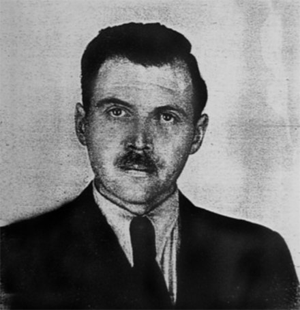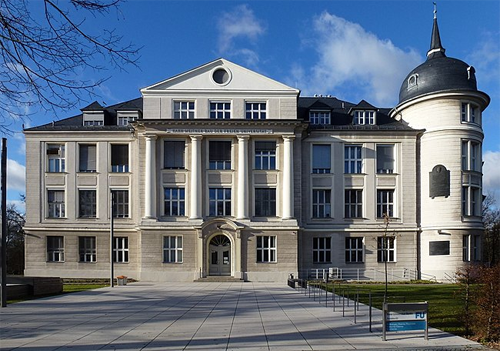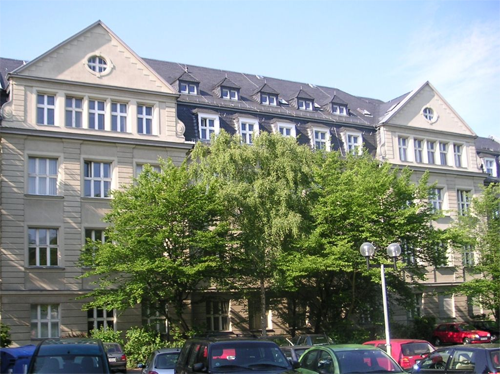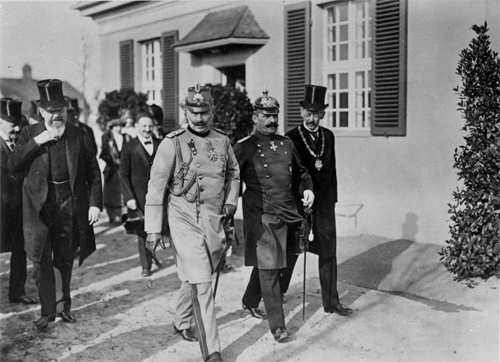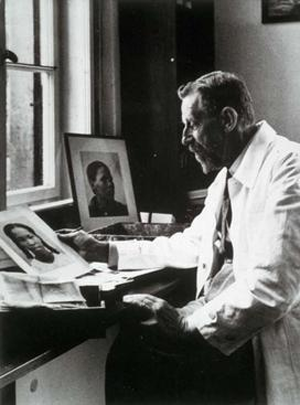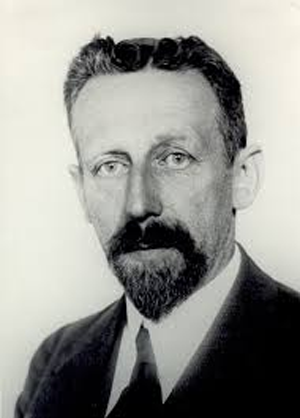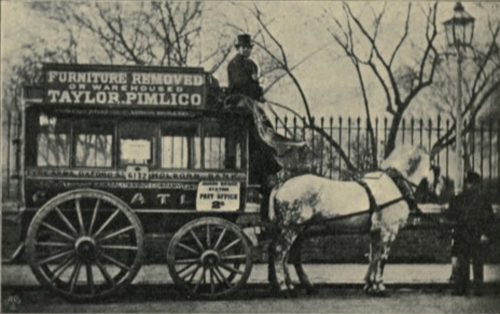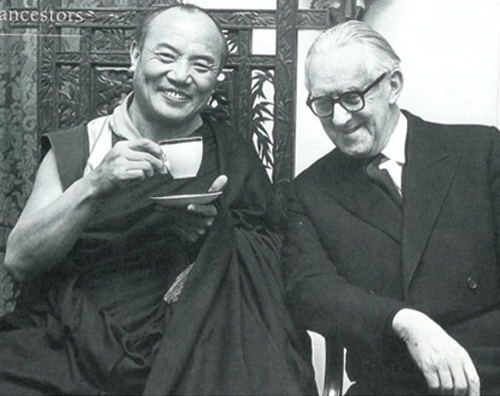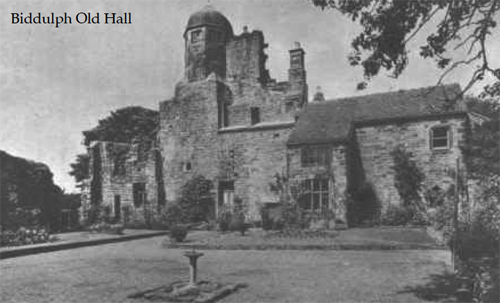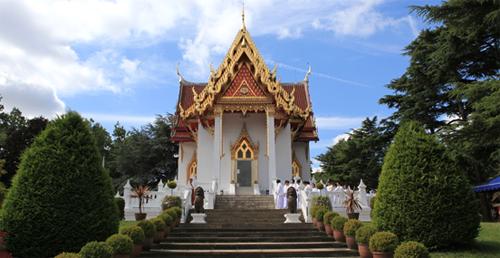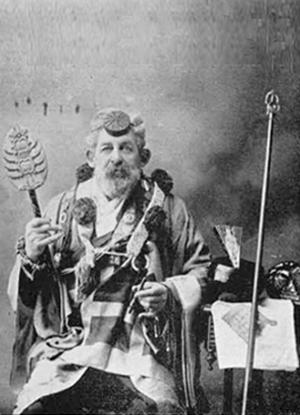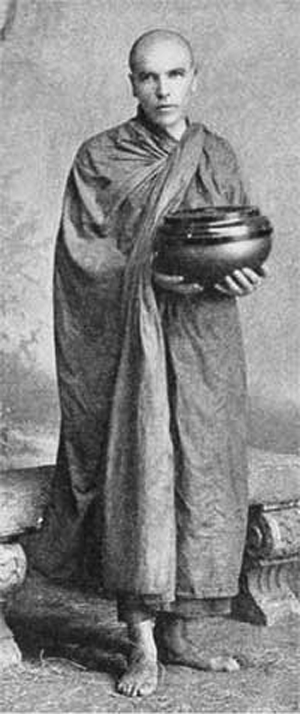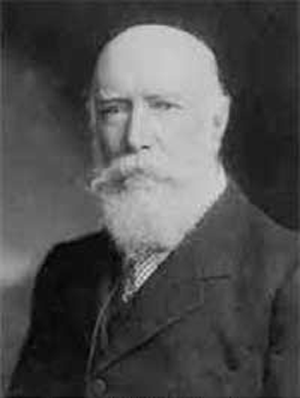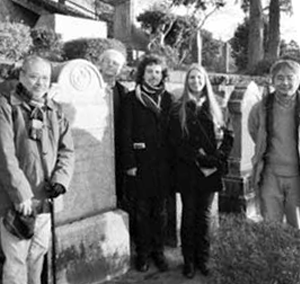Part 2 of 3
The London Buddhist mission is bornFor Pfoundes, a solution to the twin problems of what constituted 'Buddhism Pure and Simple' and how to lend authority to a non-Theosophical version of Buddhism providentially appeared in the form of the reformist Buddhist Propagation Society. Bijou of Asia's 1888 appearance was noted in both the Japanese and English press33 and welcomed, initially at least, by Theosophists. The Theosophical magazine Lucifer in March 1889 had:
… great pleasure in recommending to such of our readers as are interested in Buddhism, the Bijou of Asia, particulars of which we give below. It is an encouraging sign for the future of Buddhism in Japan that it already possesses an organ of its own in English.—[Ed.]
Lucifer went on to provide readers with subscription and contact details for Bijou of Asia. Pfoundes may already have known of the founding of the BPS in Japan or himself submitted the notice to Lucifer, in which he had published half a dozen articles during 1888.34 At any rate, news of the BPS and Bijou of Asia came at just the right time to remedy his growing despair over the existing channels of communication and quality of information available for Londoners interested in Buddhism, of whom there were many.35 He was particularly concerned about the misrepresentation of Buddhism by leading Theosophists.
This growing discontent is reflected in his three-part TTW article, published over the ensuing summer of 1889. The timing is significant: Pfoundes' frustration with Theosophy‘s distortion of Buddhist teachings coincided with the launch in Japan of the BPS which, since it had no overseas agents of its own, in turn suggested the possibility that he might become its official London representative. Pfoundes seized the initiative and during the summer of 1889 wrote to Matsuyama introducing himself36 and enclosing copies of his TTW pieces on Buddhism37 in time to receive a reply by October 4th, when he wrote to Matsuyama thanking him for sending books and confirming that he wished to be the representative of the Kaigai Senkyō Kai. This letter, subsequently published in KBJ, also asked for guidance:
"I would like to start missionary work immediately, but it would be more convenient to act with the right to be the representative of your society than to do the work privately by myself. If you would give me the right to be your representative, I will immediately set up the British branch of your society here. And I will give a lecture on the prospects and the teachings you approve. If you agree with this, would you please let me know what task you think is appropriate for me."38
This letter suggests that the Japanese side had not specified the nature of any missionary work, in keeping with Matsuyama‘s comments above. There seems to have been no plan for placing missionaries overseas and this was understandable, considering how little of Japanese Buddhism was known to the West. Before Pfoundes made himself known, the idea of setting up an organized missionary society in London run by a British person must have seemed inconceivable. The London mission was 'immediately set up', as we shall see. On Saturday October 12th 188939 Pfoundes wrote to TTW to announce his new missionary role - evidently omitting, in his excitement, to provide his address:
Saturday. Dear Editor,-You will, I am sure, be pleased to hear that I have received letters from abroad where I sent copies of your paper with my articles. The Buddhists are very much pleased with my views, and like your paper; indeed, the leaders of the Buddhist revival have made very complimentary remarks, and express surprise that a foreigner has grasped the native ideas so like what they appreciate. I am desired to stand forward as a representative of Eastern (extreme Oriental) Buddhism, and to actively proceed with the propaganda. The societies of Buddhists' priests, &c., also cordially approve, so I shall take the platform as an exponent of "Pure Buddhism, the doctrine of enlightenment," and will be glad to hear from societies wishing a lecture, or individuals anxious to enquire. Buddhism has so much in common with spiritualism on the higher planes of thought, that I feel I am doing both causes good by bringing them together.
I am, truly yours, C. PFOUNDES.
[NOTE BY EDITOR.-Capt. Pfoundes, to make his offer available to societies, should send his address. Some societies, at least, might be glad of the opportunity to place a highly intelligent and travelled gentleman on their platform, if they knew where to address him.]
By the time he launched the London branch of the BPS in October 1889, Charles Pfoundes had acquired a wealth of experience and skills useful to his new role as the first Buddhist missionary to London. He had lived in Japan for more than a decade and was fluent in Japanese. Due to his undoubted intellectual curiosity and passion for Japanese culture he possessed a deep fund of knowledge about Japan, its religions, history, art and customs. He had extensive experience as a cultural mediator; the 1870-71 delegation‘s exploration of how Japan should relate to the West was paralleled by his more mundane work as a Western maritime specialist in the modernising Thai navy and the developing Japanese merchant fleet. He had written for very different publishers and audiences40 and was a seasoned public speaker, well used to lecturing either at the invitation of artistic, spiritualist, progressive, freethinking, mercantile or orientalist etc. organisations, or through planning and advertising his own lectures at one of the many public meeting halls around London which could be hired for the purpose.
If not exactly famous, Pfoundes had certainly proved himself capable of holding the attention of fairly large London audiences on a great variety of topics. While he did not completely abandon his wider role as lecturer on Japanese culture and other topics after the launch of the London BPS in October 1889, he focused his skills and energies on the propagation of Buddhism, increasingly from March 1891 onwards in the form of a criticism of Theosophy.
Visiting Pfoundes in April 1890, by which time he had been settled in London for twelve years and the BPS had been in operation for six months, the young Japanese Buddhist scholar Kobayashi [=Takakusu] Junjiro offers, in a letter published in KBJ 11 (June 1890), a rare glimpse into the home life and daily habits of the Kaigai Senkyo Kai’s sole representative in London. Takakusu reports that Pfoundes is about 50 years old and his wife 30 years and more41 and that Pfoundes is not a man of property and lives only with his wife; meaning presumably in rented accommodation with no children, servants or lodgers. Takakusu is impressed that Pfoundes not only can speak Japanese fluently and use French, Dutch and German but has in his home around 3,000 books in Japanese and more than a decade‘s worth of his own lectures.42 Relying no doubt on conversations with Pfoundes, Takakusu reports that Pfoundes is a respected authority on Japan and had attended the opening ceremony of the School of Oriental languages.43
Although Pfoundes tells Takakusu that he does not criticise Theosophy, London sources show that Pfoundes was already well known as an energetic and hostile critic of Theosophy and its leading representatives. On the vexed issue of Theosophy‘s relationship with Buddhism, Takakusu reveals that Blavatsky herself has written to Pfoundes, arguing that her thought is not Buddhism but 'esoteric Buddhism', while Pfoundes takes the different view that 'Theosophy is Theosophy, Buddhism is Buddhism' (ibid. p26). The relationship between Theosophy and Buddhism was also a live issue for the nascent Kaigai Senkyo Kai in Japan. While in the second issue of Bijou of Asia (November 1888) Matsuyama had strongly advocated setting up a Theosophical Society in Japan to foster Buddhist unity44, Pfoundes wrote to Matsuyama on 25 October 1889 advising that Buddhism should dissociate from Theosophy, adding that he himself wished to come to Japan where he could - unlike Olcott - lecture without a Japanese interpreter and promote the cause of Buddhist unity (KBJ No.8, 1890, p.25).
Pfoundes‘ effort to convince his sponsors in Japan to reject any association between Buddhism and Theosophy was an attempt to influence the (Kyoto) centre from the (London) periphery. It shows that while Pfoundes was in one sense 'merely‘ the agent of the BPS in the capital he had an agenda of his own, arising from the specific circumstances of the mission field of 1890s London, namely to counter the influence of 'the Theosophic boom', as he described it in 189145. Moreover, while Pfoundes was in formal terms only the 'secretary' or 'organising agent' of a branch office of the Japanese Kaigai Senkyō Kai, the founders of the Senkyō Kai had no experience of running foreign missions. In London, a vast, sophisticated city and the hub of a global empire, the BPS was in practice largely Pfoundes' own creation – and evidently funded by his own efforts, no doubt largely through the voluntary collections which were a normal feature of public meetings. More than once, while requesting books or materials only available in Japan, Pfoundes reminds his Japanese sponsors that he does not ask for any funds.46
The world of the Buddhist Propagation SocietyThe London BPS leaflet has survived in at least two versions.
Fig 1 below, reproduced in Kaigai Bukkyo Jijo, shows the more decorative version, printed to Pfoundes' specification, the text surrounded by juzu rosary beads with the Buddhist swastika symbol at the top.47 It can be dated to late 1889 or early 1890. Both versions of the leaflet which have survived give Pfoundes' home address of 7, Artillery Buildings, Victoria Street, Westminster as the'Bureau‘ of the BPS. Two years later, in November 1891, Pfoundes would issue a public invitation to anyone interested in his ideas to invite him to speak on the subject, giving as his address 29 Doughty Street. This was the address of 'The Fellowship of the New Life‘, a radical communitarian group with which Pfoundes was temporarily associated, probably after separating from his wife. The BPS therefore had an address, but no headquarters building beyond Pfoundes' home. For the most part the Buddhist Propagation Society, in the person of Pfoundes, engaged face-to-face with its intended audience through public lectures, followed by discussion, at well-known public venues around London. An (upmarket) example of such venues was the 'Zephyr Hall' in Kensington, West London, advertised in The Morning Post of 2 May 1888 as follows:
ZEPHYR HALL, 9, Bedford Gardens, Kensington, W., is a fashionable Private Assembly Room, to LET, with every convenience for Concerts, Balls, Bazaars, Exhibitions, Clubs, Religious Services, &c. Terms on application.
We have so far traced at least 26 venues throughout the capital used by Pfoundes, often on multiple occasions, for lectures delivered during his time as BPS missionary. Many of the engagements we have been able to trace took place in Spiritualist meeting halls, reflecting Pfoundes' continuing engagement with a Spiritualist audience. Others were on the freethinking (atheist) circuit, such as branches of the National Secular Society (NSS) and the South Place Ethical Society. Pfoundes also mentions Socialist audiences and by this period such an audience certainly existed; we have not yet however found the relevant listings comparable to the National Reformer’s for freethought and TTW for spiritualism. In some cases the venues appear to have been 'neutral' spaces available to anyone who wished to hire them for any kind of political, religious, artistic etc. meeting. Each venue would have attracted a different clientele48 and Pfoundes' comments show his awareness of this in seeking to build an audience for Buddhism:49 "Spiritualists, socialists, free thinkers, and secularists respect me. Even some Christians agree with me." (Letter to Kaigai Bukkyo Jijo 18 November 1889; elsewhere he added Unitarians to the list).
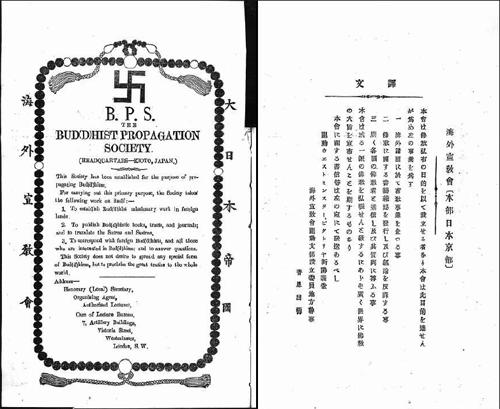 Fig 1. Bilingual leaflet of the Buddhist Propagation Society, London, produced in Kyoto about December 1889 and used by Pfoundes from 1890. Photo from KBJ courtesy of Prof Nakanishi Naoki
Fig 1. Bilingual leaflet of the Buddhist Propagation Society, London, produced in Kyoto about December 1889 and used by Pfoundes from 1890. Photo from KBJ courtesy of Prof Nakanishi Naoki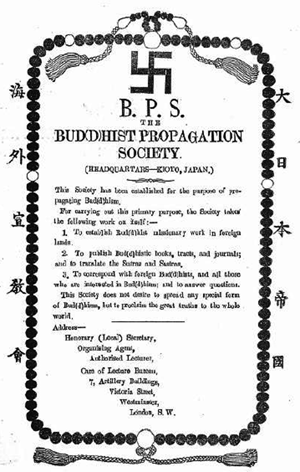
B. P. S.
THE BUDDHIST PROPAGATION SOCIETY.
(HEADQUARTERS - KIOTO, JAPAN.)
This Society has been established for the purpose of propagating Buddhism.
For carrying out this primary purpose, the Society takes the following work on itself: --
1. To establish Buddhist missionary work in foreign lands.
2. To publish Buddhistic books, tracts, and journals; and to translate the S__ and S__.
3. To correspond with foreign Buddhists, and all those who are interested in Buddhism; and to answer questions.
This Society does not desire to spread any special form of Buddhism, but to proclaim the great truths to the whole world.
Address ---
Honorary (Local) Secretary,
Organising Agent,
Authored Lecturer,
Care of Lecture Bureau
7, Artillery Buildings
Victoria Street,
Westminster,
London, S.W.
The culture of public talks was extremely widespread in the London of this day, part of a very broad process of popular self-organisation, social movements and self-education (Thompson 1968, Rose 2001; see Cox 2010). On October 27 1889, the National Reformer listed eight branches of the NSS, nine ―open-air propaganda‖ (this was the end of the open-air season) and eleven lectures. In June 1890, at the height of the outdoor season, it listed 17 outdoors events (not all NSS ones). This wide range of entertainment, education or debate was paralleled by the relatively tight organisations of spiritualists, socialists and other religious and political groups, but also by a looser world which we would today think of in terms of adult or popular education.
Shipley (1971) has examined the related world of working men‘s clubs in this period, characterised by wide reading and a culture where polemic and debate were art forms as well as participatory entertainment. Secularism and socialism were popular here: the atheist Charles Bradlaugh was elected vice-president of the national Club and Institute Union in the 1880s (Taylor 1972: 47), with a turn to socialism developing during this decade and mass working-class audiences: the NSS' central venue, the Hall of Science, had roughly 1000 members in the 1870s, while the Hackney Secular Association had 800 (Shipley 1971: 37-8). Spiritualism too was not restricted to the middle classes but had a broad working-class attraction (Barrow 1986).
Further up the social ladder, Gandhi (2006) has noted
"For those whose heterodoxy manifested itself expressly against mainstream Christianity, Theosophy and its contiguous offshoots offered a spiritual alternative in eastern religions, one that demanded a corresponding disavowal of the claims of "modern" western civilization. It was this tendency that brought the movement and its largely middle-class adherents into intimate commerce with parallel, secular, avant-garde critiques of western civilization, exemplified in the linked projects of dress and sexual reform, and homosexual exceptionalism; dietary politics, anti-vivisectionism, and vegetarianism and aestheticism, or the repudiation of bourgeois materialism and philistinism in the form of class or colonial avarice." (2006: 122).
Along with these and other social movements (most obviously the "New Unions" from the 1880s, left organisations such as the Social Democratic Federation and the Fabian Society, and organisations geared towards exile politics), London at this period also included a vast range of public talks of a more familiar kind. Pfoundes, with his substantial experience of lecturing and public speaking, had much to offer. The BPS 'propagandist' could address some important concerns for many of the thoughtful, often self-taught people who were seeking to make sense of the world in this context: how to think about religion in a changing age – in particular, how to be ethical without fear of divine retribution; how to understand the relationship between western culture and the sophisticated Asian cultures then being colonised; and how other ways of living might be possible.
What did the Buddhist Propagation Society propagate?On 14 October 1889, just after launching himself as an apostle of 'Buddhism pure and simple', Pfoundes wrote to Matsuyama that he had been lecturing recently on the differences between Buddhism and Theosophy because Theosophy was becoming unpopular. The title of a lecture he was about to deliver shows that the 'hook' used to attract his audiences in the weeks just before the London BPS was launched was the promise of a critique of Theosophy.50 In the very same issue (Friday 18th October) of TTW in which Pfoundes announced his appointment as BPS representative, TTW gave notice of a Sunday lecture two days later:
"The Occult Society, Carlyle Hall, Church Street, Edgware Road.- Oct. 20th, at 7 p.m., Capt. Pfoundes will lecture on ―Theosophy: its follies and fallacies." (TTW 1889-10-18 p.596).
The same lecture had been given on the previous Sunday 13th at the Spiritualist hall at King‘s Cross. (TTW 1889-10-11 p.ii).
The next Pfoundes lecture advertised in TTW reflects a change in approach, following his appointment to head the BPS. There is no reference to Theosophy in the title; the talk is entitled simply 'Buddhism‘. This lecture, delivered in the Beaumont Rooms, Mile End Road51 at 7pm on Sunday November 10, 1889, may be considered the very first public talk given in London – or for that matter the west - by a Buddhist missionary.
The emphasis on 'Buddhism pure and simple' was continued in a subsequent lecture delivered on the following Sunday evening:
Progressive Association, Penton Hall, 81 Pentonville Road. - November 17, at 8, Captain Pfoundes, F.R.G.S., "Buddhism: the doctrine of enlightenment". (NR 1889-11-17 p. 318)
By the following weekend Pfoundes‘ restraint in regard to Theosophy appears already to have weakened, for TTW announced two successive Sunday evening lectures in
LONDON (Notting Hill Gate, Zephyr Hall): …Nov. 24,Captain Pfoundes, on "Theosophy-the truth about it" and Dec. 1st, "Buddhism-what it is and is not;" ….
Back in the East End on December 8th, Pfoundes delivered another 'Buddhism pure and simple' lecture on behalf of the BPS. The TTW reported favourably as follows:
LONDON. Mile End. Assembly Rooms, Beaumont Street. Capt. Pfoundes lectured upon "Buddhism-the doctrine of enlightenment." A most interesting lecture. He showed that Buddhism was a direct appeal to common sense, disclaiming all inspiration from a personal God. There were many points upon which Spiritualism and Buddhism were in perfect agreement - both teaching that it was impossible to escape from the consequences of any act, good or evil. Buddhists refused to dogmatize upon any subject whatever, recognizing liberty and respect of opinion as a fundamental principle of their ethical system. -a TTW reporter. (TTW 1889-12-18 p.53)
As this sample of lectures and discussions offered between October and December 1889 indicates, Pfoundes usually lectured weekly, typically on Sunday evenings, at a variety of locations. He seems to have kept up this rate steadily until January 1892, a period of over two years, while also speaking from the floor at other events and distributing (or at least requesting hundreds of copies of) Bijou of Asia. While audiences were known to fluctuate according to speakers, it seems that Pfoundes was a reasonable draw and he was often invited back. He wrote to KBJ "Every Sunday I give a lecture. The audience is sometimes over hundreds [more than 100] in number. Respectable citizens, scholars, workers with culture."52 Even allowing for some exaggeration and a fair number of repeat listeners, the BPS must have succeeded in reaching thousands of people in this way. His talks lasted for an hour and were followed by questions and answers which could run to two further hours (undated letter reprinted in KBJ, 27 May 1890, p. 32).
On 12 November 1889, a month after his appointment as BPS representative, Pfoundes wrote to Matsuyama that he had already lectured in the following venues:
Zephyr Hall, Kensington; … Sydney Hall, Wandsworth Road; … Spiritualist Hall, Kings Cross Road; … Beaumont Hall, Mile End Road; … Carlyle Hall, Edgware Road; … Progress Hall, Islington53
TTW announcements or reports offer more detail on the lectures given at all but the last, the Progressive Hall, which was a Secularist rather than Spiritualist venue. In December 1889 Pfoundes again delivered Sunday evening lectures at the Zephyr and Beaumont halls, and at the Winchester Hall, Peckham High Street. On Sunday 22 December the TWW was disappointed that Pfoundes had failed to turn up at the King‘s Cross Spiritualist hall but reported that '[ i]n his absence Dr. [Bowles] Daly54 gave an interesting sketch of Buddhism‘.
Pfoundes‘ lecturing campaign continued in the new year, with a run of Sunday evening talks at NSS venues. On January 5th 1890 the National Reformer advertised at the "Woolwich branch of the N.S.S. 'Sussex Arms‘ Assembly Rooms, 60 Plumstead Road. – … at 7.30, Captain C. Pfoundes, 'The gospel of Buddhism‘.", On 19th January at 7.30 Pfoundes addressed the "North-West London Branch of the N.S.S., Milton Hall, Hawley Crescent, Kentish Town Road" on 'Buddhism'. On 26th at the "Battersea Branch of the N.S.S., 'The Shed of Truth,' Prince of Wales‘ Road, the speaker at 7.15 was Captain Pfoundes, 'Buddhism'.
About this time, Pfoundes wrote to Matsuyama describing a typical London BPS lecture as consisting of 1) the purpose of the B.P.S., 2) the difference between Buddhism and Christianity, 3) the ancient religions of Persia, India, China etc, and the going eastward of Buddhism, 4) the application of Buddhist truth to everyday lives, 5) purity of its morals and 6) the merits to all people. 55
Pfoundes probably lectured during February 1890 but we have no record of his engagements. On March 9th at the "Progressive Association, Penton Hall, 81 Pentonville Road" at 7pm, Mrs. Frederika Macdonald (a gifted writer, intellectual and exponent of Indian philosophy who three years later publicly debated Theosophy vs Buddhism with Annie Besant and then donated her share of the evening‘s takings to a poor children‘s charity)56 spoke on 'Buddhism'. Since Sunday evening at the Penton Hall was one of Pfoundes' regular slots, MacDonald may have been that rara avis, a close ally of Pfoundes and a Buddhist co-propagandist.57 On Sunday 16th March the "Ball‘s Pond Branch of the N.S.S. Secular Hall 36 Newington Green Road" heard a lecture on "Buddhism or enlightenment: its gospel and doctrines". The speaker on this occasion was identified only as "the Representative of the Propaganda‖, so could have been either Pfoundes or MacDonald. On 23 Pfoundes returned to the Beaumont Rooms, Mile End Road to expatiate on 'Theosophy; its facts, fallacies, and false pretences'.58
In late April Reynolds’ Newspaper gave notice of a lecture on 27th at the "Buddhist Propagation Society Hall, Newington-Green Road, 7.30". This might suggest the BPS had taken the significant step of investing in its own property, but an announcement for the same lecture in the NR makes clear this was really the ―Ball‘s Pond Branch of the N.S.S. at the Secular Hall, 36 Newington Green Road.‖ The speaker is described as 'An Orientalist', and the topic "Theosophy of the day: its autopsy and obsequies". Takakusu Junjiro, who was staying with the Pfoundes' during that month, confirms in a letter to the BPS in Japan that three Theosophists verbally attacked Pfoundes after the lecture, but by 11pm he had won the argument. Takakusu also reported that Pfoundes was booked up until late June. 59 The frequency of engagements and level of repeat bookings again indicate that Pfoundes was in considerable demand as a lecturer.
On May 11th, according to the NR, at the East London Branch of the N.S.S., Swaby‘s Coffee House, 103 Mile End Road, Capt. Pfoundes, F.R.G.S., was due to speak on 'Philosophic Buddhism‘." On May 25th at the "West Ham Branch of the N.S.S., West Ham Secular Hall, 121 Broadway, Plaistow," Pfoundes spoke on 'The ethics of Buddhism‘ and back in the Beaumont Assembly Rooms, Mile End Road on Sunday June 1st 'Captain Pfoundes. Member Rl. U. Service Inst., Corr. Memb. Geogr. Soc. Japan, Hon. Fel. Soc. Sc. Lit. & Art., London, Representitive [sic] of Bud(d)hist Propagation Society, etc., etc.‘ spoke on 'Ancient & modern centres of spiritual activity. Admission was free, and 'Courteous discussion invited‘ (see Fig 2 below).
On June 15, in an unusual departure from his usual London lecture circuit, Pfoundes gave three lectures in a single Sunday in the Northern industrial town of Sheffield, presumably at the invitation of the local NSS. The advertisement read:
Sheffield: HALL of science, to-morrow (SUNDAY). LECTURES by CAPTAIN PFOUNDES, F.R.G.S., Mem. Rl.U. S. Inst., Cor. Mem. Geogr. Soc. Japan, Fel. Soc. Lit and Art, Lond., etc., etc. Subjects: At 11, "The Science of Religious Philosophies and Ethics"; at 3, "Theosophy : Its Follies, Fallacies, and False Pretences"; at 7, "Bud(d)hism: What it Was, Is, and Is Not." Admission: Front Seats, 6d. (tickets for all the lectures 1s.) Back Seats, 3d.60
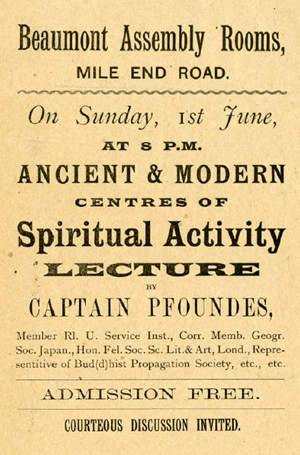 Fig 2. Flyer for Pfoundes‘ lecture on 1 June 1890. Reproduced by kind permission of the Oregon Historical Society (President‘s office correspondence. Mss 1609, Lewis and Clark Centennial Exposition Records. © Oregon Historical Society Research Library).
Fig 2. Flyer for Pfoundes‘ lecture on 1 June 1890. Reproduced by kind permission of the Oregon Historical Society (President‘s office correspondence. Mss 1609, Lewis and Clark Centennial Exposition Records. © Oregon Historical Society Research Library).Beaumont Assembly Rooms,
MILE END ROAD.
On Sunday, 1st June,
at 8 P.M.
ANCIENT & MODERN
CENTRES OF
SPIRITUAL ACTIVITY
LECTURE
BY
CAPTAIN PFOUNDES,
Member R1. U. Service Inst., Corr. Memb. Geogr. Soc. Japan., Hon. Fel. Soc. Sc. Lit. & Art, Lond., Representitive of Buddhist Propagation Society, etc., etc.
ADMISSION FREE.
COURTEOUS DISCUSSION INVITED.
Pfoundes' missionary work in the capital resumed in September with lectures followed by discussion. Throughout the autumn of 1890 and the winter and early spring of 1891 talks were delivered, almost invariably on Sunday evenings, at the venues mentioned above and others throughout London. On October 5th Pfoundes spoke on 'Bud(d)hist Ethics‘ at the Penton Hall (below).
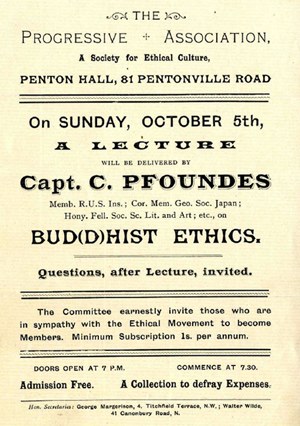 Fig 3. Flyer for Pfoundes‘ lecture on October 5 1890 at the Penton Hall. Reproduced by kind permission of the Oregon Historical Society (President‘s office correspondence. Mss 1609, Lewis and Clark Centennial Exposition Records. © Oregon Historical Society Research Library).
Fig 3. Flyer for Pfoundes‘ lecture on October 5 1890 at the Penton Hall. Reproduced by kind permission of the Oregon Historical Society (President‘s office correspondence. Mss 1609, Lewis and Clark Centennial Exposition Records. © Oregon Historical Society Research Library).THE PROGRESSIVE ASSOCIATION,
A Society for Ethical Culture,
PENTON HALL, 81 PENTONVILLE ROAD
On SUNDAY, OCTOBER 5th,
A LECTURE
WILL BE DELIVERED BY
Capt. C. PFOUNDES
Memb. R.U.S. Ins.; Cor. Mem. Geo. Soc. Japan; Hony. Fell. Soc. Sc. Lit. and Art; etc., on
BUDDHIST ETHICS.
Questions after Lecture, invited.
The Committee earnestly invite those who are in sympathy with the Ethical Movement to become Members. Minimum Subscription is per annum.
DOORS OPEN AT 7 P.M., COMMENCE AT 7:30
Admission Free. A Collection to defray Expenses.
Hon. Secretaries: George Margerison, 4, Titchfield Terrace, N.W.; Walter Wilde, 41 Canonbury Road, N.
On occasion there was visual spectacle; in January 11th 1891 the audience at the NSS 'Secular Hall‘ near Battersea Park station looked forward to:
'Captain Pfoundes (accompanied by a Buddhist Priest in his robes), a Buddhist sermon.‘61
As well as announcements of talks, we find occasional brief reports of BPS meetings, such as this for a lecture delivered the following Sunday, January 18th 1891:
LONDON. King's Cross. 182, Caledonian Road. Evening: Capt. Pfoundes gave a Buddhist sermon. There were many noteworthy points, but space does not permit as full a report as the subject and the lecturer deserve. The following precepts, known in Buddhism as "The Five Steps," must serve as a sample: "Respect for Life," "Honesty-the protection of property," "Truthfulness," "Chastity-equal purity being required of both sexes," "Temperance - total abstinence from intoxicants and injurious drugs."
For reasons unclear, Pfoundes‘ lectures on Buddhism in 1891 were suspended, after a March 18th 'Buddhist Sermon by the Propagandist‘ at the Woolwich branch of the NSS, in favour of lectures from April to the end of June devoted to India, with titles such as 'India‘s Rights and England‘s Duty' or, on June 7th, at a newly established Marylebone Spiritualist venue, a lecture on "India, 'tracing its development from 1499 under the East India Company to the present time, its invaluable literature, the population, and their rights Spiritually'."62
In August, Lloyds Weekly Newspaper, in its report on a meeting of the Bread and Food Reform League63, singled out Pfoundes‘ contribution for special mention:
BREAD AND FOOD REFORM. The closing meeting of the Reform League took place on Friday night, at the Memorial Hall, and during the three days the meetings have been largely and influentially attended. There were 34 stalls, presided over by various ladies and among the promoters were Lady Mount-Temple, Sir Spencer Wells, Mr. J.R. Diggle, and a number of medical gentlemen. Various addresses were given, among them one by Captain Pfoundes on "Food in Many Lands." In the course of his remarks he said that as the chairman had introduced him as one who had travelled in many lands, he would just say that in contrasting the people who lived on carnivorous food with those who were restricted to vegetarian diet he could testify to the amount of the physical and intellectual activity of the latter. The colonists of Australia were largely a meat-eating people, but they were not superior in endurance to some of the Oriental peoples who abhorred flesh, and among whom he would mention certain of the Chinese, Indians, and Arabs. He concluded by recommending his hearers to consider the question of food reform and cooking.64
From late September to December of 1891, there is no mention of Buddhism in the titles that have come down to us of Pfoundes‘ lectures; all are badged as criticisms of Theosophy, as discussed further below. However, we may safely assume that one of Pfoundes‘ key arguments was that Theosophy was not authentic Buddhism. After a short break in January 1892, allegedly due to a health breakdown, Pfoundes once again referred to Buddhism in the title of a lecture (this time with music) hosted by the Progressive Association at Penton Hall, one of his regular BPS venues:
January 31, at 7, Captain Pfoundes, 'Bud(d)hism not theosophy: critically contrasted‘; preceded by vocal and instrumental music."
This is the last record we have of a ‗missionary‘ lecture by Pfoundes on Buddhism. A few days later he gave a general lecture on life and customs in East Asia, no doubt similar to dozens he had delivered to audiences of all kinds between his arrival in London in 1878 and the launch of the London BPS in 1889:
Recreative Evening. –One of the numerous interesting lectures organised by the Recreative Evening School association was delivered on Tuesday evening at Mowlem schools, Bishops-road, Hackney. Captain Pfoundes gave some of his experiences of China and Japan, the lecture being illustrated with dissolving views. It was said to be a mistake to suppose Orientals illiterate – on the contrary, there is a very high ideal of intellectual life; and practical ethical standards that would do credit to the highest type of society are closely followed by a large percentage of the people.65
After this, we have no record of any public lecture by Pfoundes until September 1892, when he presented a paper on 'Buddhism in Japan' at the prestigious Oriental Congress held at London University.66 True to form, Pfoundes displayed his detailed knowledge of East Asian Buddhism partly in order to show that:
'[a]nyone who studied the teachings of the Esoteric school would see the gross mistakes made by people who called themselves Esoteric Buddhists, and professed the hotch-potch misnamed Theosophy.'67
How did the BPS propagate Buddhism?The name of Pfoundes' mission, the 'Buddhist Propagation Society‘, was derived directly from the senkyo in Kaigai Senkyo Kai and highlights the importance of the idea of 'propagation‘ (or sometimes 'propaganda', then a term without negative connotations) as a key religious activity.68 While Western audiences today generally expect Buddhist teachers to convey teachings derived from Buddhist scriptures and to provide authoritative instruction in meditational techniques, Buddhist ethics and ritual deportment with, perhaps, some emphasis on social engagement, Pfoundes' immediate aim, like that of his Japanese sponsors, was to propagate Buddhism; to multiply its influence. The BPS leaflet identifies three ways in which the Society intended to bring this about: (1) to establish Buddhist missionary work in foreign lands, (2) to publish books, tracts and journals and to translate the scriptures and (3) to correspond and answer questions from foreign Buddhists and those interested in Buddhism. Like U Dhammaloka, who around 1904 from his Japanese-inspired 'English Buddhist Mission‘ in Singapore planned to send newly-ordained Western monks to multiply his impact in various parts of Asia (Bocking 2010), Pfoundes hoped to ignite sufficient zeal for propagating Buddhism among his hearers in London that some would become, like him, propagandists in foreign parts.69 Shortly after starting the BPS in October 1889, he wrote to Matsuyama in Japan:
"I am instructing some young men. They will go to Europe and America to teach Buddhism. And I will send them to China, Siam, Burma, Ceylon, India to do missionary work." (KBJ no.7, 25 Feb 1890. p.29)
From a historical perspective, this "propagandist" approach to Buddhism in fact aligns it more closely with an international movement like freethought, whose basic activity consisted in publications and talks. Spiritualism and socialism, the other movements Pfoundes piggy-backed on in London, both added a practical component (albeit of very different kinds), while what we would now expect to be "religious" activities played a very limited and tentative role in Pfoundes' activities. This reflected contemporary Japanese debates around Buddhist reform as well as Pfoundes' own assessment of what was feasible or even meaningful in the London context.
In any case, "propagation" did not work as hoped. There is nothing surprising about this: the Buddhists of the Kaigai Senkyo Kai were confident that the Westerners would be converted to Mahayana Buddhism without great effort because the Southeast Asian form of Buddhism – which they thought of as Hinayana and theoretically inferior to Mahayana – was apparently prevalent in Europe.70 Pfoundes observed at one point "We should learn from the failures of Christian missions" (letter to KBJ, 14 Oct 1889, p. 30). This probably refers to his earlier first-hand observations of Christian missions in Japan.71 It is perhaps unsurprising that Pfoundes could comment "There is no one who is openly committed to our movement. [However] there are many who regularly attend my meeting" (letter to KBJ, 25 October 1889).
How could interest be turned into commitment? Pfoundes attempted various strategies. On 27 July 1890 he offered lectures in "practical philanthropy" (meaning first aid), apparently in association with the St. John‘s Ambulance Brigade. On 13 November 1891 he offered a class in "spiritualist ethics". There was apparently little take-up for this: from 3 December he was offering a free Thursday class in "psychology". These could perhaps be read as attempts to translate traditional Buddhist concerns around ethics and right action into western contexts.
Another strategy was to offer ritual: as early as 25 October 1889 he wrote "At least every Sunday, we want to have Buddhist services. We want Buddhist ceremonies which satisfy those people accustomed to the ceremonies here". Later in the same letter he requested "Buddhist ceremony modified for Britain" (letter to KBJ, p. 22). In January 1891 he was able to put this into practice: on the 4th he appeared in the "Monarch" Coffee House under the auspices of the Bethnal Green branch of the NSS "accompanied by a Buddhist Priest in his robes", presumably the same individual previously mentioned with whom he appeared at the Battersea Park branch a week later on the 11th, offering "a Buddhist sermon".
Yet Pfoundes‘ mission lacked both the migrant base of the later missions to California and the BSGBI‘s later orientation towards ordination (of course neither was much more successful long-term). It would be decades before the modernist meditation trainings developed by Asian reformers for lay, urban contexts would become available in the west (e.g. Christmas Humphrey‘s 1935 manual).
